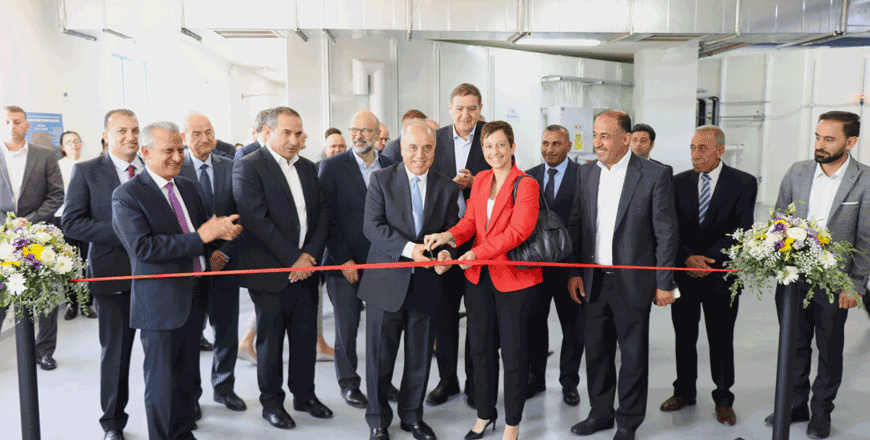You are here
SESAME lights up new beamline for material science experiments
By JT - Dec 31,2019 - Last updated at Dec 31,2019
AMMAN — On Monday at 1:21pm, scientists successfully delivered the first monochromatic X-ray beam to the Materials Science (MS) beamline at the Synchrotron-Light for Experimental Science and Applications in the Middle East (SESAME) laboratory in Balqa Governorate, according to SESAME.
The beamline will be used in applications of the X-ray powder diffraction (XRD) technique in materials science, providing a powerful tool for studying microcrystalline or disordered/amorphous material on the atomic scale and the evolution of nano-scale structures and materials in extreme conditions of pressure and temperature, as well as developing and characterising smart new materials, a SESAME statement said.
“To see the X-ray signal inside the MS experimental station was very exciting,” MS beamline scientist Mahmoud Abdellatief was quoted in the statement as saying. “It was the realisation of four years of hard work, and has given me added stimulus for the new challenges lying ahead before the beamline may host users in some six months.”
A synchrotron light – or synchrotron radiation – source produces very intense pulses of light/X-rays, with wave lengths and intensities that allow detailed studies of objects ranging in size from human cells, through viruses down to atoms, with a precision that is not possible by other means, according to the SESAME website.
Synchrotron light sources are generally “user facilities.” Scientists from universities and research institutes typically visit synchrotron laboratories to carry out experiments on the beamline that corresponds to the needs of their work, frequently in collaboration with scientists from other centres and countries, and then return home to analyse the data they have obtained.
The MS beamline is the first at SESAME to be equipped with an insertion device, a gift from the Swiss Paul Scherrer Institute (PSI), and a device that enhances the brightness of the synchrotron light, thus reducing the time needed to make measurements and making it possible to follow fast processes, according to the statement.
The major components of the beamline, also donated by PSI, were previously installed at the Swiss light source. Modifications were introduced in the beamline design so that these components match the characteristics of the SESAME storage ring.
A powerful PILATUS 300K area detector, donated by DECTRIS (a Swiss company), which is soon to be installed, will provide the fast read-out time that is required to investigate the evolution of nano-scale structures and materials in extreme conditions of heating and cooling under gas flows, the statement noted.
SESAME’s MS beamline will accommodate XRD experiments in the energy range between five and 25 kilo-electronvolts. It will provide a powerful tool for studies in many scientific fields including the environment field, energy storage materials and cultural heritage.
Related Articles
AMMAN — The Synchrotron-light for Experimental Science and Applications in the Middle East (SESAME) on Monday announced that a group of its
AMMAN — An experimental scientific programme using X-ray beamline and an Infrared (IR) beamline was launched on Tuesday, the Jordan Ne
AMMAN — With BEATS, the fifth beamline at the SESAME (Synchrotron-light for Experimental Science and Applications in the Middle East) synchr

















